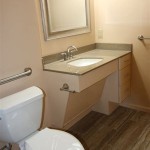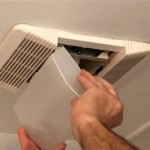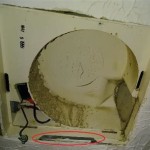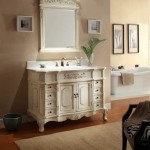Small Gray Bugs in Bathroom Sink
Discovering small, gray bugs in the bathroom sink can be unsettling. These tiny creatures often appear seemingly out of nowhere and can raise concerns about sanitation and potential infestations. Identifying the specific type of bug is the first step towards effective management and prevention. This article will explore the common culprits, explain why they are attracted to bathroom sinks, and offer solutions for eliminating and preventing future occurrences.
Common Culprits
Several types of small, gray bugs are commonly found in bathroom sinks. Drain flies (also known as moth flies or sewer flies) are among the most frequent offenders. These small, fuzzy, gray or brown flies are often mistaken for moths due to their hairy bodies and wings. They breed in the organic matter that accumulates in drains, feeding on the biofilm, hair, and other debris. Another common inhabitant is the springtail. These wingless insects are typically gray, white, or black and are incredibly small, often appearing as mere specks. Springtails thrive in moist environments and feed on mold and mildew, often found in damp areas around the sink and drain.
Booklice, also known as psocids, are another potential culprit. These tiny insects are typically light gray or brown and feed on mold, mildew, and starchy materials. While their name suggests a preference for books, they are often found in damp areas like bathrooms, particularly if there are sources of mold or mildew present. Finally, silverfish, though typically silver or brown, can sometimes appear grayish. These nocturnal insects prefer damp, dark environments and feed on a variety of materials, including paper, glue, and textiles. While less common in sinks, they can sometimes be found in nearby areas.
Attraction to Bathroom Sinks
The primary reason these small, gray bugs are attracted to bathroom sinks is the presence of moisture, organic matter, and potential food sources. Drains, in particular, offer a perfect breeding ground for drain flies and a source of moisture and food for other insects. The combination of standing water, hair, soap scum, and other organic debris creates a rich environment for these pests to thrive. Furthermore, leaks under the sink or around the faucet can create damp conditions that attract moisture-loving insects like springtails and booklice. The presence of mold and mildew, often resulting from excess moisture, can also attract these pests.
Cracks and crevices around the sink or in the walls can provide entry points and harborage for these insects. Additionally, poor ventilation can contribute to increased humidity levels in the bathroom, making the environment more conducive to their survival and reproduction. Open windows or unscreened vents can also allow these insects to enter the bathroom from outdoors, particularly during warmer months.
Elimination and Prevention
Eliminating these small, gray bugs requires a multi-pronged approach that addresses both the immediate infestation and the underlying causes. For drain flies, pouring boiling water down the drain can help to kill larvae and eggs. Commercial drain cleaners can also be effective, but it's essential to follow the manufacturer's instructions carefully. Baking soda and vinegar can also be used as a natural drain cleaner. For springtails and booklice, reducing moisture is key. Repairing leaks, ensuring proper ventilation, and wiping down surfaces to prevent moisture buildup can significantly reduce their populations.
Thoroughly cleaning the sink and surrounding areas with a disinfectant cleaner can remove organic matter and mold, eliminating food sources for these pests. Vacuuming or sweeping up any visible insects can also help to reduce their numbers. For silverfish, sealing cracks and crevices can help to prevent their entry and harborage. Sticky traps placed strategically around the sink can also help to monitor and capture these insects. Regular cleaning and maintenance of the bathroom, including regular drain cleaning and moisture control, are crucial for preventing future infestations. Proper ventilation and prompt repair of leaks are essential for maintaining a dry environment and discouraging these pests from taking hold.
Identifying the specific type of insect is crucial for targeted treatment. If infestations persist despite these efforts, contacting a pest control professional is recommended for a more comprehensive assessment and treatment plan.

What Was That Little Silver Bug In The Bathroom Moyer

Tiny Bugs In Your Bathroom Identification Control Worst Room

Identify Tiny Bugs In Bathroom And Get Rid Of Them For Good

How To Get Rid Of Silverfish In The Bathroom Keep Them Away

12 Examples Of Brown Bugs In A House An Identification Guide

How To Get Rid Of Springtails In The Bathroom What S That Bug
We Are Seeing Small Flies In Our Bathroom Any Idea What Could Be Causing Them To Show Up Quora

5 Common Bathroom Pests You Can Spot Fantastic Services

How To Get Rid Of Springtails Handling A Springtail Infestation Abc Blog

7 Tiny Black Bugs In Kitchen Sinks
Related Posts







